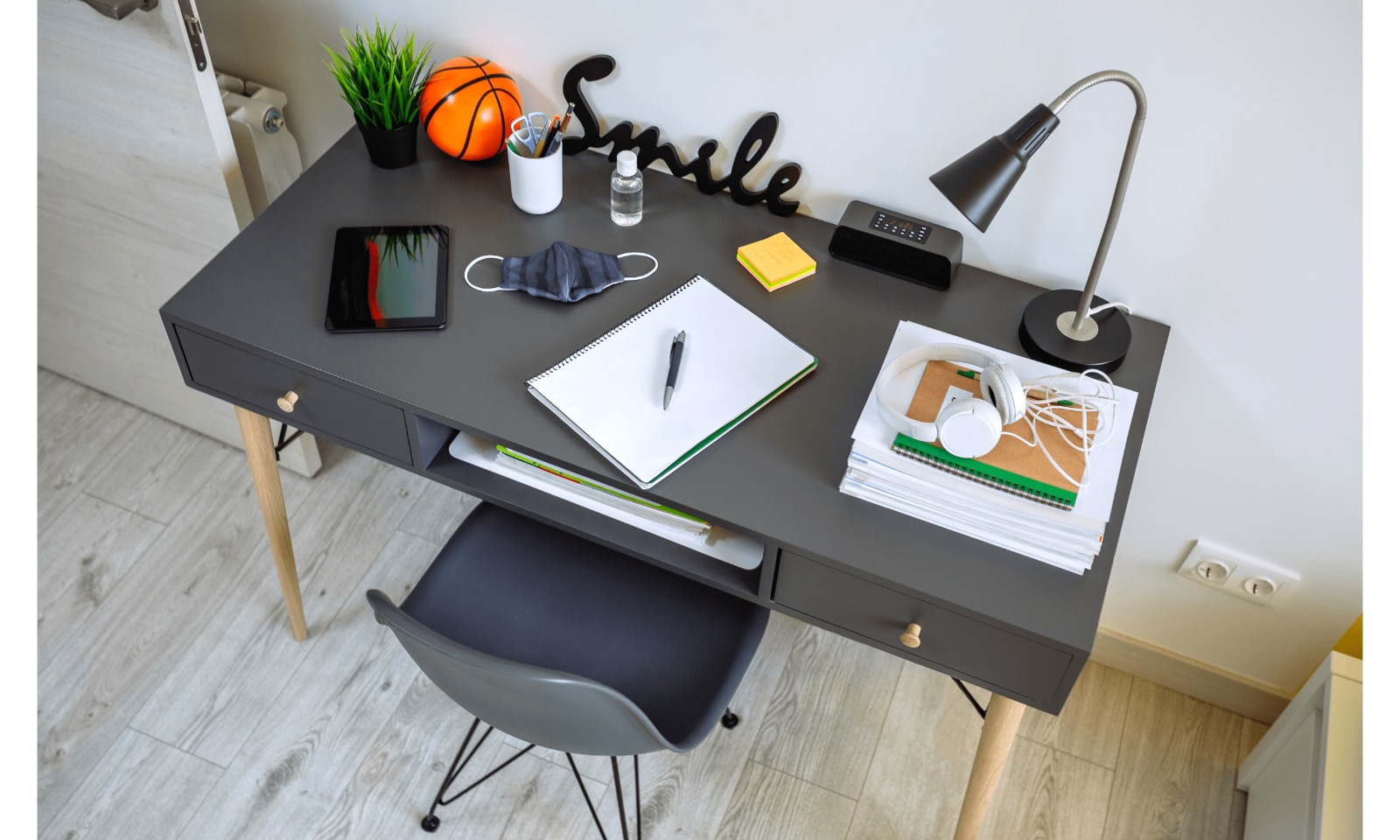In today’s fast-paced world, having a dedicated, functional, and comfortable workspace is more important than ever—whether you’re a student preparing for exams, a remote worker juggling tasks from home, or a professional upgrading your home office. At the center of this workspace lies one essential piece of furniture: the study table.
While it may seem like a simple purchase, choosing the right study table can have a profound impact on your posture, productivity, and mental clarity. With hundreds of styles, features, and sizes on the market, making the right decision can be overwhelming.
This guide will help you understand what to look for when choosing a study table, tailored to your space, needs, and lifestyle.
1. Assess Your Needs First
Before heading to the store or browsing online catalogs, ask yourself a few questions:
- Who is it for? (a child, college student, working adult, etc.)
- What tasks will it support? (writing, computer use, online classes, drawing, etc.)
- How much time will be spent at the table daily?
- Do you need additional features? (drawers, built-in shelves, adjustable height, etc.)
Your answers will shape your choice in terms of design, size, material, and accessories.
2. Measure Your Space Accurately
A study table should fit comfortably within your available space. Take exact measurements of the room where it will be placed, and consider the following:
- Leave at least 2–3 feet of clearance behind the chair for easy movement.
- Ensure there’s enough room on both sides for additional furniture or storage if needed.
- Consider nearby power outlets if you’ll be using electronics like laptops, desk lamps, or printers.
Use masking tape on the floor to visualize the table’s footprint and ensure it doesn’t overcrowd the room.
3. Choose the Right Size
Size matters—not just in terms of your room, but also how much surface area you’ll need to work efficiently.
For Small Spaces
- Opt for compact desks (30–40 inches wide) that provide enough space for a laptop and notebook.
- Wall-mounted or foldable tables are ideal for very tight areas.
For Larger Rooms or Multi-Tasking
- Look for study tables 48 inches or wider, especially if you’ll be using multiple devices or need space to spread out books and documents.
Height Consideration
- The ideal study table height is 28 to 30 inches, suitable for most adults.
- For children, consider adjustable-height tables that can grow with them.
4. Focus on Ergonomics
A study table that looks good but causes neck or back pain isn’t helpful. Ergonomics plays a key role in your comfort and efficiency.
- Elbows should be at a 90-degree angle when typing or writing.
- The table should be high enough so your knees fit comfortably underneath.
- If using a desktop monitor, your eyes should align with the top third of the screen to prevent neck strain.
- Pair your study table with a supportive chair with adjustable height and lumbar support.
If you plan to work for extended periods, consider adding a footrest and an anti-glare desk lamp for extra comfort.
5. Pick the Right Material
Study tables come in a variety of materials, each with its pros and cons. The best one depends on your aesthetic preference, budget, and usage needs.
Wood
- Durable and classic
- Available in various finishes (oak, walnut, maple, etc.)
- Can be expensive, especially for solid wood
Engineered Wood (MDF, particleboard)
- Budget-friendly
- Lighter than solid wood
- Less durable over time, especially if exposed to moisture
Metal and Glass
- Modern and sleek look
- Usually lighter and easier to clean
- May not be ideal for kids (glass can break, metal may scratch floors)
Choose a material that complements your room’s decor while being durable enough for daily use.
6. Consider Storage and Organization Features
A clutter-free workspace leads to better focus and less stress. Depending on your habits, consider tables with built-in storage:
- Drawers: Great for storing stationery, gadgets, or personal items
- Shelves: Useful for organizing books, files, or decorative items
- Cable Management: Some desks come with cut-outs or trays to manage cords
- Hutch Design: Ideal if you need vertical storage without taking up more floor space
If you prefer a minimalist design, pair your table with a separate drawer unit or file cabinet.
7. Decide on Style and Aesthetics
Your study table should not only be functional but also blend well with your room’s theme. Some popular styles include:
- Modern Minimalist: Clean lines, neutral colors, no clutter
- Industrial: Metal frames with wood tops for a raw, rugged look
- Scandinavian: Light wood, simple design, and natural tones
- Classic Wood: Ornate designs with darker finishes, great for traditional interiors
Choose a design that resonates with your taste and keeps you inspired to work or study.
8. Explore Adjustable and Multi-Purpose Options
If flexibility is key, consider innovative designs:
- Height-adjustable desks (manual or electric) allow switching between sitting and standing positions, reducing fatigue during long study sessions.
- Convertible desks with foldable tops or side panels can double as dining tables or workstations.
- L-shaped desks are great for multitasking and corner placement.
Such options are especially useful in shared or multifunctional spaces.
9. Think Long-Term: Durability and Maintenance
A quality study table is an investment, so opt for materials and finishes that last. Here’s what to look for:
- Water-resistant coatings on wood to prevent damage from spills
- Scratch-proof surfaces, especially for writing or drawing
- Sturdy joints and reinforced frames
- Easy-to-clean finishes, particularly for kids or creative work
Read reviews or ask the manufacturer about warranty terms and after-sales service.
10. Budget Wisely
Study tables come in a wide price range—from $50 to $1,000+, depending on features and materials. Set a realistic budget, factoring in:
- Quality (is it built to last?)
- Additional accessories (chair, lamp, storage)
- Delivery and assembly costs
Remember, the cheapest option isn’t always the most cost-effective in the long run. Aim for value over price, balancing functionality, aesthetics, and durability.
11. Buy From Trusted Brands or Stores
Whether buying online or in-store, research is key:
- Read customer reviews and product ratings
- Check return policies and warranties
- Look for brand credibility, especially if you’re purchasing an ergonomic or adjustable desk
Some reputable brands and retailers for study tables include:
- IKEA
- Urban Ladder
- Wayfair
- AmazonBasics
- Pepperfry
- Flexispot (for standing desks)
Conclusion
Choosing the right study table is about more than just looks—it’s about creating a productive, comfortable, and personalized workspace. With the right combination of size, style, functionality, and ergonomics, a study table can dramatically improve your concentration, posture, and workflow.
Whether you’re studying for an exam, working from home, or managing a hybrid routine, invest in a table that supports your goals—and makes your space feel uniquely yours.
Bonus Tip: Once you’ve chosen your table, consider organizing it with accessories like:
- Monitor stands
- Drawer organizers
- Cable clips
- Desk mats
- Pen holders
- Minimalist desk lamps
Together, they’ll transform a simple table into a focused and inspiring workspace.



